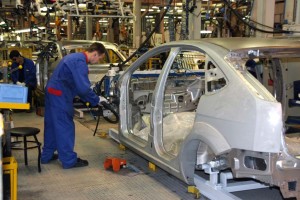General Motors is planning to invest more than $1 billion in Russia over the next five years, said James Bovenzi, managing director of GM Russia and CIS, and it expects production, including production by its joint venture partners, to double from 232,000 units in 2010 to more than 520,000 units in 2015.
But the maker doesn’t want to do it alone. GM wants its traditional supply network to follow along. And so do Ford, which sees significant growth potential of its own in Russia.
“The reason we are there is we see opportunity,” Bovenzi said during a dinner meeting arranged by the U.S.-Russia Business Council to encourage American automotive suppliers to consider investments in Russia.
“There is a lot of pent-up demand in Russia” he noted. “The average vehicle is more than 10 years old. The middle class is growing and nine of the 10 best-selling cars in Russia are foreign brands,” noted Bovenzi, adding GM’s Chevrolet brand was a top seller.
As it expands in Russia, GM would like to bring key suppliers with them to help improve the quality of the vehicles it sells across Russia. “The supply base in Russia isn’t very mature,” he said. But the Russian government wants the automotive sector to expand.
Alan Draper, Ford of Europe vice president of purchasing, said local production of components can help offset some of the transportation challenges that are among the more severe obstacles to doing business in Russia. Companies such as Johnson Controls and Lear Corp. have already set up plants in the sprawling country and he hopes that others will follow.
Plants built by American suppliers also will help meet the Russian government’s goal of 60% local content as part of the agreement that will let the Russian Federation into the World Trade Organization next summer.
“There is still an enormous opportunity,” he said. “Russia will (soon) be one of the most important markets in the world,” the predicted.
Matthew Edwards, acting director of the US Department of Commerce office for trade with Russia, Ukraine and central Asia, said despite the turmoil of the past two decades, Russia’s economy is stable. The Russian economy has expanded for 10 consecutive years, it has the world’s third largest reserve of foreign currency, little government debt and huge oil reserves that are rising in value.
Exports from the US to Russia have been increasing but still lag behind those from Germany and Japan.

